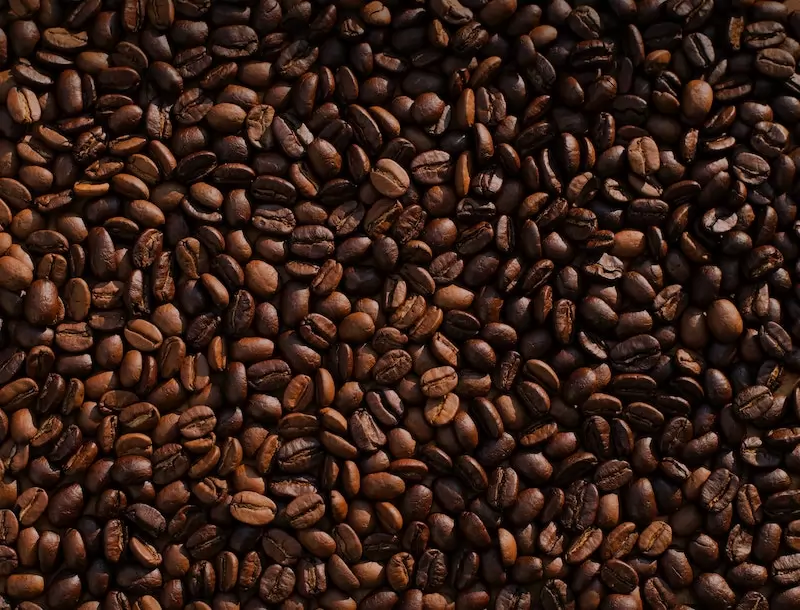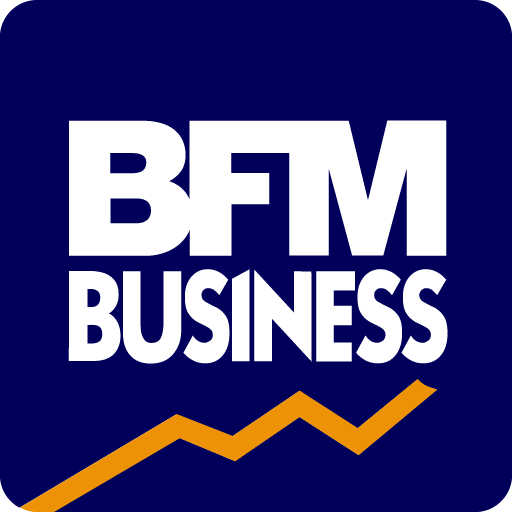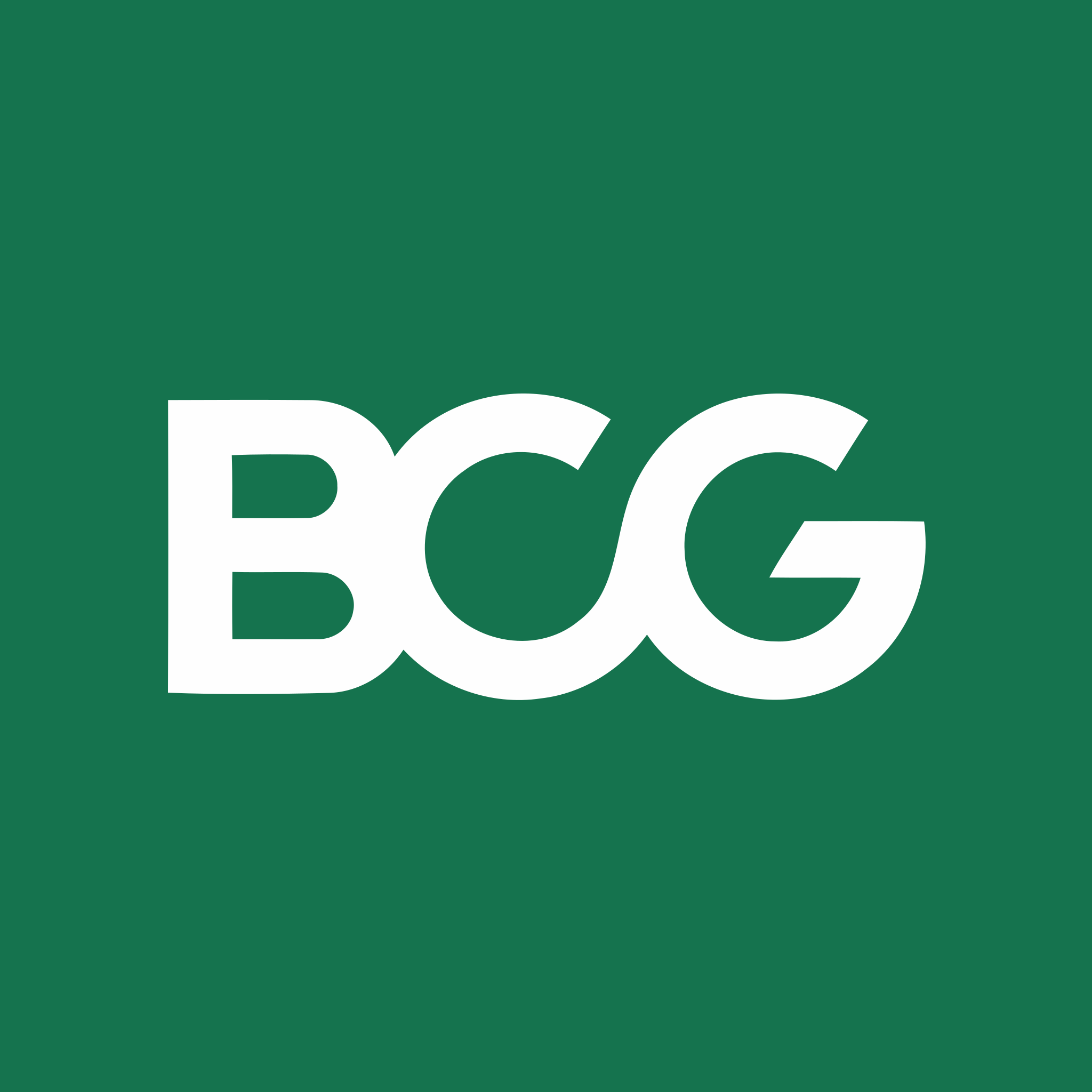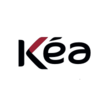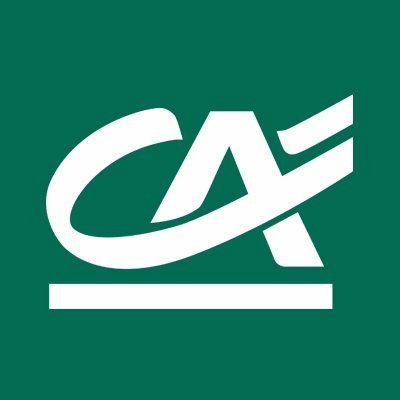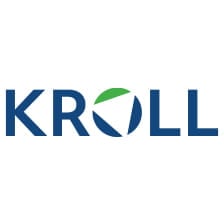Summary of our market study
By 2023, the total coffee market in France will be worth around €3.6 billion.
The pandemic led to a 33.1% drop in sales in the Cafés-Hotels-Restaurants (CHR) sector, while the home consumption market saw unprecedented growth, with supermarket sales up 8.8% in value and 3.2% in volume.
Changing consumption patterns and the rise of premium coffee in France
On average, French consumers consume the equivalent of 5 to 5.5 kg of coffee beans a year, placing France among the world's top 20 consumers. This market is experiencing an increase in the value of coffee sales and a shift in consumer habits towards higher-quality products.
Roasted coffee accounts for over half of supermarket sales.
Coffee pods have become a staple in French households, with Senseo, Tassimo and Nespresso leading the way. This segment captures over a third of the market value in supermarkets.
More than two-thirds of consumers prefer superior-quality coffee, such as that found in pods. Organic products and fair-trade coffee are seeing a considerable increase in sales, but these are still niche markets.
French people mainly drink their coffee at home, then at work. Mornings are still the preferred time for coffee, but consumption continues in the afternoon and during lunch.
Hypermarkets and supermarkets account for 81% of the home consumption market, followed by hard discounters (12%), e-commerce (4%), and convenience stores (3%).
Nestlé and JDE dominate the French market.
Market players
- Nestlé: Leading the global coffee scene with its extensive product range, including the popular Nespresso brand.
- JDE (Jacobs Douwe Egberts): strong presence in the pod coffee segment with its Tassimo, Senseo and L'Or brands
- Lavazza: from Italy, known for its espresso and its wide range of bean-to-cup and ground coffees
- Alter Eco: committed to ethical and sustainable practices
- Malongo: Another advocate of organic and fair-trade coffee options
- Méo Fichaux: coffee roasting company
- Cafés Joyeux: the brand's teams mainly include employees with Down's syndrome
to understand this market
Detailed content of our market study
 Inforamtion
Inforamtion
- Number of pages : 35 pages
- Format : Digital and PDF versions
- Last update :
 Summary and extracts
Summary and extracts
1 Market overview
1.1 Market overview and definition
Coffee is an energy drink made from roasted coffee beans. Coffee is thought to have been discovered in prehistoric times by inhabitants of the Kaffa region of Ethiopia. It was then transported to Yemen in the 6th century.
Coffee consumption began in earnest in Yemen in the 15th century, then spread throughout the Arabian-Ottoman kingdom, eventually reaching Europe. It is the world's second most traded commodity after oil, and the most widely consumed beverage after water. Global consumption was estimated at 9 million tonnes in 2018, equivalent to 2 billion cups consumed every day. Brazil, the United States, Japan, Western Europe and Northern Europe are the world's biggest coffee consumers, while most of the world's production comes from Brazil, Vietnam, Colombia and Indonesia. Production generally takes place on small farms of less than 5 hectares.
France is a mature market that continues to increase in value thanks to ever greater product differentiation through different tastes and packaging. Market concentration is high, and companies leading the way include Nestlé, JDE and Lavazza .
Organic coffee continues to have a low penetration and growth rate in France, but could be one of the segments driving the market in the medium term. In 2023, this dynamic seems to be taking shape, as the propensity for organic coffee appears to be increasing. The Covid-19 pandemic has altered the paradigm of French consumption habits, insofar as since the health crisis, the French have sought to consume in a healthier way. This has led to an increase in organic coffee sales, and also in the supply of organic coffee. Today, the market is affected by rising prices, but remains stable.
1.2 A growing global market (dominated by Europe)
Annual coffee consumption World, ****-****, million tonnes CAGR : *%Source: ****
World coffee consumption remains relatively stable, with a slight upward trend.
According toICO, the world's leading market is Europe, with **% of global consumption. Despite large populations in Asia and Oceania, these two regions combined account for only **% of global consumption.
Coffee consumption by region World, ****-****, % Source: ****
Africa is the fastest-growing region, with average annual growth of *%. It is closely followed by asia and Oceania, North America and South America, with growth of *.*%, *.*% and *.*% respectively.
1.3 French market driven by rising prices
In France in ****, the average French person consumes the equivalent of *.* kg of coffee beans a year, placing the nation **th in the world. Finland is the biggest consumer, with ** kg per year. In France, in ****, **% of the population reported consuming coffee. [***]
The chart below reveals how coffee sales in France have increased between **** and ****. In ****, out-of-home coffee sales were €*.* billion, while in-home sales were €*.** billion. This growth is mainly fuelled by the prevalence of coffee pods and by coffee moving upmarket. Meanwhile, this growth will be reflected in traditional ground coffee, as consumers switch from standard fresh ground coffee to ground coffee pods and fresh coffee beans.
Coffee market size France, ****/****, in billions of euros Source: ****
As far as coffee makers are concerned, there are essentially two types available for French households: espresso coffee makers and filter coffee makers. Sales trends for these two types of coffeemaker are key market drivers. For example, sales of espresso coffee makers rose by almost *% in **** compared with the previous year (***), showing that espresso consumption in French households is on the rise. Coffee machines with grinders were the most popular over the year, with sales up **%. [***]
According to LSA Conso, sales in the sector ...
1.4 Foreign Trade
The international coffee trade is not dominated by direct relations between producing and consuming countries. In fact, the transformations that coffee beans undergo before reaching the end consumer (***) enable intermediate countries to integrate into the world market. Switzerland, for example, is a major player in the international coffee trade, thanks in particular to the presence of Nestlé and Nespresso. Switzerland's foreign trade in coffee is greater than for products typically associated with the country, such as cheese and chocolate. [***]
With this in mind, we can now better understand France's foreign trade in coffee. For the purposes of this analysis, the UN Comtrade code used was :
****: coffee, roasted or decaffeinated; hulls and skins; coffee substitutes containing coffee in any proportion
coffee imports and exports France, ****-****, in billions of dollars Source: ****
France is a much more important importer than exporter of coffee. Indeed, in ****, the country imported a total of $*.** billion of these products while exporting just $*.** billion. However, this trend is changing if we look at the country's coverage rate (***) for this product over the last * years. If in ****, this was **.*%, in **** it was **.**%, showing that coffee exports are increasingly close to offsetting imports. All the same, we can imagine ...
1.5 The effects of the Covid-19 pandemic on the coffee market
The effects of the health crisis on CHR (***) consumption
According to a report by the French coffee union, sales in the cafés-hotels-restaurants sector fell by **.*% in ****. Some companies focusing exclusively on the coffee market have seen their sales plummet by as much as **% during confinements. The reopening of bars and restaurants during the summer period barely mitigated the loss of sales in the on-trade. The return to confinement in November further weakened this sector, which was already suffering severe losses. The union hopes that, with vaccination and a return to "normal" life, the **.*% of French coffee consumers can revive the out-of-home coffee sector.
The effects of the health crisis on out-of-home coffee consumption
"With the out-of-home channel reopening modestly, and still driven by a shift in consumption from this channel to the home, **** was, for us, synonymous with unprecedented growth in supermarkets."explains Alice Finaz de Villaine, Marketing Director of Carte Noire, part of the Lavazza Group, which posted a **.*% increase in sales in the mass-market channel. She also declares: "Even summer **** was buoyant in supermarkets, as a large number of our compatriots did not go on vacation abroad, preferring to stay in France because of the pandemic."As ...
2 Demand analysis
2.1 The French consumer
In this section, we aim to shed light on the preferences and characteristics of French consumers. Generally speaking, coffee consumption in France is high: **% of the population said they enjoyed this beverage in ****, and **% of men and **% of women admit to being coffee fans. For people over **, the penetration rate is even higher (***). [***]
Home is the most popular place to drink coffee, followed by the workplace, a café or a bar. The most common time to drink is in the morning (***)[***]
Finally, the majority of French consumers drink between one and three coffees a day (***). **% drink between three and five, and *% more than five cups a day. [***]
Breakdown of coffee-buying households by age group France, ****, in Source: ****
In ****, we can see that people under ** seem to consume less coffee than other age groups, since if we average the breakdown of coffee purchases across all types, we get just *.**% compared with **.**% for people aged between ** and **, for example. Seniors (***) seem to prefer filter and soluble coffees, with **.*% and **.*% respectively. Those aged ** to ** are more inclined towards bean-to-cup coffees with **.*%, and filter coffees with **.*%. Finally, people aged ** to ** seem to prefer pod coffees.
Frequency of annual coffee purchases France, ****-****, in number of ...
2.2 Key demand factors
Coffee consumption can be divided into three main segments: firstly, roasted (***) coffee, the traditional way of consuming coffee. Secondly, there's pod coffee, such as espresso, Senseo or other types. Finally, we have soluble or instant coffee, generally in powder form.
Market share by volume in supermarkets France, ****, in Source: ****
A survey conducted by Que-Choisir provides additional information on French coffee consumers. According to this survey, the favorite coffee preparation of the French is the short espresso (***). In addition, a third of French people said they drink decaffeinated coffee, but usually in smaller quantities and almost never exclusively.
Most popular coffee preparations France, ****, in Source: ****
The survey also looks at the purchasing criteria consumers take into account when buying a coffee maker. The most important was coffee quality, with **% of consumers saying they take this into account when buying a coffee maker. This criterion is followed by the machine's durability (***) are therefore secondary to the product quality criteria, showing the extent to which consumers are prepared to invest a little more if it means they get a better product.
Purchasing criteria for coffee makers France, ****, in Source: ****
2.3 Demand trends
Product differentiation
In France, recent market trends show that demand is strongly correlated with product differentiation. Product differentiation is an integral part of a very mature market.
Indeed, to achieve this, manufacturers are increasingly seeking to move upmarket. Aspects such as aroma quality, the "terroir" associated with the coffee's origin, the selection of quality raw materials and the creaminess of the foam are the new marketing levers. It also leverages brand recognition and the association with superior-quality coffee, reinforcing differentiation.
For example, Lavazza has organized coffee tastings in several shopping malls to create a product experience focused on quality coffee. At these events, marketing teams focus on provoking a sensory journey around coffee, from the coffee plant to the cup, and through the integration of hostesses, baristas and tasters. [***]
To win over and retain new customers, Nespresso is also innovating, offering a "subscription" service that lets consumers rent a Vertuo machine for monthly payments of €**, with which the customer acquires a credit to purchase capsules and accessories. [***]
Finally, consumers are appropriating these supply trends: according to IFOP, **% of French consumers were sensitive to the use of coffee pods as an emerging trend in ****. The second most popular category is ground coffee ...
2.4 France's favorite brands
Answer to the question: Which of these brands do you like? France, ****, in Source: ****
Of the ** brands most familiar to the French, Carte d'Or, L'Or and Nespresso make up the top three, while the generalist brand Alter Eco concludes the ranking of the French's favorite coffee brands.
Answer to the question: do you know the brand ... ? France, ****, in Source: ****
Assisted awareness of coffee brands seems particularly high, since on average **% of respondents answered yes to the question: do you know the brand ... ? The brands best known to the French are Carte Noire, l'Or, Nescafé and Grand'Mère.
Average answers to the question: do you like the brand ... ? By region France, ****, in Source: ****
Finally, a study by region shows that French people's attachment to coffee brands differs according to their region of residence. Île-de-France residents are the most attached to the ** brands mentioned, with an average **.**% answering yes to the question: "Do you like the brand ...?". On the other side of the spectrum, people living in the South-West of France answered yes to only **.**%, an average difference of almost **%.
2.5 France's favourite coffee brands
The graph below shows the French people's favorite coffee brands.
Carte Noire is the French people's favorite coffee brand, with a **.*% approval rating, while Alter Eco is the least appreciated, with a **.*% rating.
French people's favorite coffee brands France, March ****, in Source: ****
In the graph below, we have chosen the brands with the greatest difference in appreciation rates according to age. The appreciation rate of these coffee brands increases with the age of the respondents. For Lavazza, for example, almost **% of people over ** say they like the brand, while this rate rises to **% for **-** year-olds. For Carte Noire, the difference in appreciation levels between younger and older respondents can be explained by the brand's positioning. Carte Noire offers only pure Arabica coffee, a more upscale type of coffee, while other coffee brands sell a blend of Robusta and Arabica. Arabica coffee is renowned for its finer aroma, while robusta coffee is more bitter and less aromatic. These taste characteristics appeal more to more experienced coffee lovers, who tend to be older customers. Comparison of * coffee brands according to age France, March ****, in Source: Opinionway survey "Marque préférée des Français The brands in the graph below show ...
3 Market structure
3.1 Value chain
[***]
3.2 Coffee production process
The coffee production process consists of a series of essential steps to obtain the beverage.
Harvesting: coffee harvesting is a delicate and crucial task. It involves picking the coffee cherries, the ripe fruit of the coffee plant. These cherries are generally orange-red in color when ready to be harvested. The harvesting period varies according to region and coffee variety, but can last several months. Hand-picking is often preferred to ensure selection of the ripest, highest-quality cherries. On average, a coffee plant produces around *.* kg of coffee cherries per year, equivalent to around *** grams of roasted coffee once the process is complete.
Coffee bean preparation: Once the coffee cherries have been harvested, they need to be prepared to extract the precious coffee beans. The cherries can be sorted and cleaned to remove impurities. In the case of high-quality coffees, this stage is particularly meticulous. Next, the cherries can be dried, either in the sun or in special dryers. After drying, the coffee beans are extracted from the cherries and sorted according to size and quality. The beans are then packed into bags for shipment to the roasters.
Roasting: Roasting is a crucial stage that transforms green coffee beans into roasted coffee beans ...
3.3 Coffee processing
Thanks to NAF code **.**Z "Transformation du thé et du café" (***). This is due to the fact that the market remains highly concentrated, creating tough competition that leaves few opportunities for new players. However, the number of establishments will increase significantly from **** onwards
Number of coffee processing companies France, ****-****, in number of units Source: ****
Geographical distribution of coffee and tea processors
[***]
[***]
Île-de-France has the highest number of establishments and employees in this sector, followed by Auvergne-Rhône-Alpes and Normandie. Corsica, on the other hand, has the lowest number of establishments and employees. Other regions such as Bretagne, Grand Est and Provence-Alpes-Côte d'Azur also have a significant presence.
3.4 Coffee distribution
Distribution of coffee for home consumption
In ****, the top five distribution channels in France were: hypermarkets and supermarkets with **% market share, followed by hard discounters with **%, e-commerce with *% and finally convenience stores with *%.
Coffee distribution channels for home consumption France, ****, in Source: ****
The concentration of the market can be seen when we analyze its market shares. In ****, the three largest companies accounted for **% of sales. Nestlé (***) in particular are the sector leaders. French brands are also less present on the domestic market.
Brand market share in terms of coffee sales France, ****, in Source: ****
In addition, market consolidation is being reinforced by increased M&A activity by the major players. In September ****, Nestlé bought a **% stake in US roaster Blue Bottle Coffee. In addition, Lavazza acquired French company Carte Noire for *** million euros in ****. Many large coffee companies are following the same trend, acquiring premium or artisanal brands in an ongoing effort to reap market share through product diversification. [***]
Market share of Nespresso-compatible coffee capsule players, by value France, ****, in % [ Reuters Source: ****
In ****, the JDE group (***) had the majority of market share, with **.*%. The second biggest player after JDE was private labels with **.*%. note that Nestlé does not appear in the chart ...
4 Offer analysis
4.1 The different segments: the rise of portionable coffees
The Arabica/Robusta distinction
There are two main varieties of coffee: Arabica, which grows at higher altitudes (***) and is the most widely cultivated, and Robusta, which grows at lower altitudes and is more concentrated in caffeine. worldwide, in ****, almost **% of production was Arabica and the rest Robusta.
World coffee production by volume of bags and Robusta/Arabica distinction Coffee year (***), ****-****, in millions of ** kg bags Source: ****
Coffee pods
Very marginal ten years ago, the podded coffee segment now represents more than a third of the value of coffee sales in supermarkets, representing *.** billion euros (***). The leader in this segment in supermarkets is the JDE group via the Tassimo, Senseo and L'Or brands. At the same time, sales of Nespresso capsules in the brand's specialist outlets generate one billion euros a year.
Leading sales in supermarkets, pods are nonetheless the second most valuable segment in coffee sales after roasted coffee, taking into account all distribution channels (***).
In April ****, the French Competition Authority forced Nespresso to "remove obstacles to the development of other manufacturers of capsules that work with its coffee machines"; other manufacturers then created compatible capsules, notably under the L'Or expresso, Café Royal and Carte Noire brands. Prior to this, ...
4.2 The price
The graph below illustrates the evolution of coffee prices in France. The base value is *** in ****. If the index value rises to ***, this is equivalent to an overall price increase of *%. Following this logic, we see that, on average, coffee prices for coffee beans or ground coffee have risen by *.*% between **** and ****. In other words, coffee has become more expensive, as a result of product pre-eminence. In **** and ****, inflation affected the price of coffee, which rose sharply.
Finally, in ****, the average price of a coffee was €*.** in France and €*.** for inhabitants of the Île-de-France region. [***]
Price index for coffee, tea and cocoa France, ****-****, base *** (***) Source: ****
Average price of a cup of coffee at home France, ****, in euros Source: ****
The price of a filter coffee cost just * centimes for a cup of coffee, while a cup of coffee with a Nespresso or Dolce Gusto-type capsule cost ** centimes in ****.
Here are the prices of coffee in **** according to Cafelista:
5 Regulations
5.1 Regulatory framework
International standards exist for the production, trade and consumption of coffee. The International Coffee Agreement, which was signed by the ** members of the International Coffee Council in **** and came into force in ****, aims to promote international cooperation in the coffee market in order to develop a sustainable coffee economy and promote coffee quality and consumption. It also provides for the establishment of quality standards for exports and the promotion of transparency in the sector through the publication of more information and statistics on the world coffee market.
France is concerned by European regulations. European Directive ****/*/EC covers product guidelines. Its scope includes labelling, for example. In addition, the import of organic coffee into Europe is covered by a separate framework, Regulation (***) no. ***/****.
Finally, at national level, a decree was published in October **** concerning coffee and chicory extracts. It includes requirements relating to sales, the minimum dry matter content of coffee, the relative names of caffeinated products and labelling. For example, a coffee may be labelled "concentrated (***) provided that the dry matter content of the coffee is, by weight, greater than **%".[***]
An overview of national coffee directives is available here.
6 Positioning the players
6.1 Player segmentation
- JDE Jacobs Douwe Egberts (JAB Holding)
- Méo Fichaux
- Malongo, Cie Mediterranéenne des Cafés
- Lavazza Groupe
- Café Richard Groupe
- Folliet
- Ecotone Groupe (Alter Eco, Bjorg, Bonneterre)
- Café Legal
- Etienne Coffee & Shop
- Tails.com (Nestlé Purina)
- Maison Lagrange
- Cafés Albert
- Coffea
- Cafés Sati
- Ricardo- Cafés Richard Groupe
- Grain de Sail
- Cafés Reck
- Cafés Bibal
- Merling Professionnel (Groupe Merlin)
- Café michel - Terra Etica
- Belco
All our studies are available online in PDF format
Take a look at an example of our research on another market!
 Choosing this study means :
Choosing this study means :
Access to more than 35 hours of work
Our studies are the result of over 35 hours of research and analysis. Using our studies allows you to devote more time and added value to your projects.
Benefit from 6 years' experience and over 1,500 industry reports already produced
Our expertise enables us to produce comprehensive studies in all sectors, including niche and emerging markets.
Our know-how and methodology enable us to produce reports that offer unique value for money.
Access to several thousand articles and paid-for data
Businesscoot has access to all the paid economic press as well as exclusive databases to carry out its market research (over 30,000 articles and private sources).
To enhance our research, our analysts also use web indicators (semrush, trends, etc.) to identify market trends and company strategies. (Consult our paying sources)
Guaranteed support after your purchase
A team dedicated to after-sales service, to guarantee you a high level of satisfaction. +44 238 097 0676
A digital format designed for our users
Not only do you have access to a PDF, but also to a digital version designed for our customers. This version gives you access to sources, data in Excel format and graphics. The content of the study can therefore be easily retrieved and adapted for your specific needs.
 Our offers :
Our offers :
the coffee market | France
- What are the figures on the size and growth of the market?
- What is driving the growth of the market and its evolution?
- What is the positioning of companies in the value chain?
- Data from several dozen databases
Pack 5 études (-25%) France
- 5 études au prix de 74 €HT par étude à choisir parmi nos 1200 titres sur le catalogue
- Conservez -25% sur les études supplémentaires achetées
- Choisissez le remboursement des crédits non consommés au terme des 12 mois (durée du pack)
Consultez notre catalogue d’études sectorielles
